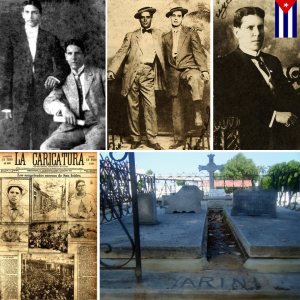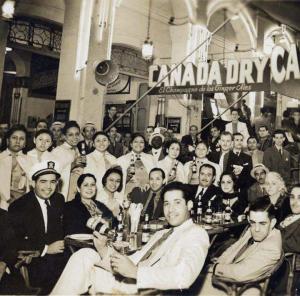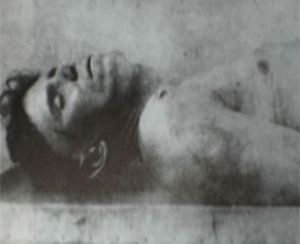ALBERTO YARINI, EL REY DE LOS CHULOS CUBANOS.
Alberto Yarini Ponce de León. Hombre superficial y ambicioso dotado de gran carisma personal, del don del liderazgo, del gusto por el vicio y el peligro y de una enorme habilidad para manipular a sus semejantes, de todo lo cual usó sin restricciones en la vana función de alimentar su insaciable egolatría.
Según testimonio de los afamados músicos Gonzalo Roig y Sindo Garay, y de otras muchas personas que le conocieron, Yarini tenía una peculiaridad en su carácter que llegaba a inspirar miedo hasta a los hombres más “duros” y marginales de San Isidro: era capaz de pasar de la tranquilidad más asombrosa a estados desmedidos de ferocidad, durante los cuales podía golpear brutalmente a quien hubiera provocado su ira.
Nacido en La Habana el 5 de febrero de 1882. Fue bautizado en la iglesia parroquial de Nuestra Señora de Monserrate, como Alberto Manuel Francisco Yarini Ponce de León.
Se crió en el seno de la acaudalada, y no realmente aristocrática, familia Yarini Ponce de León, hijo de Cirilo, cirujano dentista, miembro fundador de la Sociedad de Odontología y catedrático titular de la Escuela de Cirugía Dental de la Universidad de La Habana, y de la muy respetable dama Juana Emilia, tan virtuosa del piano que llegó a tocar para Napoleón III en Las Tullerías.
Alberto fue el último de tres hermanos y el mimado de su señora madre. Cursó estudios en el colegio habanero San Melitón y después fue enviado a proseguir su educación en los Estados Unidos, de donde regresó a los 19 años para convertirse de inmediato en el clásico representante de la juventud burguesa de su época: es decir, un habitué de la Acera del Louvre, donde él y sus amigos distinguidos -ninguno de los cuales trabajaba- acudían cada tarde a colocar sillas en la acera para “ver pasar a la gente”, beberse unos tragos, pavonearse luciendo trajes cortados a la medida, hechos con las mejores telas y adornados con yugos, leontinas, botonaduras y pasadores de corbata que valían fortunas, y entregarse a francachelas nocturnas entre gente de baja estofa.
Yarini, además, era de gran belleza física, y aunque su estatura distaba bastante de ser elevada (la altura no era común en los varones cubanos blancos de la época) —pues solo medía cinco pies seis pulgadas y su peso corporal era de unos sesenta kilogramos—, poseía gran porte natural, incrementado por su dandysmo: “Bien rasurado y mejor peinado; de hablar pausado, en voz baja y bien modulada; con un refinamiento que le venía desde la cuna, hablaba el español y el inglés con la perfección de quien no posee gran cultura, pero ha estudiado en escuelas de ambos idiomas; era educado, sabía escuchar a los mayores en edad y jerarquía; cruzaba los cubiertos cuando le hablaban; era todo sonrisas y gestos refinados con las damas cuando se encontraba en el mundo social, político y familiar” , mientras que en San Isidro, rodeado de la hez moral de la ciudad, “era el guapo al que había que hablarle bajito y rendirle pleitesías y respeto” .
Simpático, generoso, distribuía por igual monedas y palmadas entre los habitantes del barrio de San Isidro, el peor afamado de la ciudad y célebre en el extranjero, donde al pasar por un café al aire libre, de esos tan comunes en las capitales europeas, se podía escuchar entre la concurrencia la entusiasta pregunta: “Cuando estuviste en La Habana, ¿no fuiste a San Isidro?”.
Pero Yarini no era el único en cabalgar, ni el único en salir a pasear cada mañana su pareja de galgos (no de perros san Bernardo como aseguró el periodista Leonardo Padura en su interesante artículo La guerra de las portañuelas, publicado hace ya muchos años en el Diario Juventud Rebelde), ni debió ser el único hombre que deambulaba sin guardaespaldas por las peligrosas y estrechas calles del barrio marginal. Yarini, a pesar, o tal vez por causa de su costado rufianesco, tenía madera de líder.
SU MUERTE.
Los apaches, como llamaban los cubanos a las pandillas de chulos franceses de San Isidro capitaneadas por el parisino Luis Letot, eran tan levantiscos como sus homólogos del patio, pero Letot, de temperamento tal vez no demasiado violento y que se anotaba al savoir vivre, al par que extrañamente filosófico, acostumbraba decir que había que “vivir de las mujeres, y no morir de ellas”, y podía mostrarse en ocasiones tan exquisito como un cortesano de Versalles.
Así se comportó con Yarini cuando este le robó escandalosamente la joya más valiosa de su último cargamento de prostitutas desembarcado en La Habana, la pequeña Berthe, hermana de su concubina Jeanne Fontaine, y por tanto su propia cuñada. Berthe, de 21 años, rubia y de ojos azules, era una absoluta lindura, según juicios de quienes la conocieron, y se la tenía como la mujer más bella que paseó zapatos por las estrechas calles del barrio.
Días después los dos capos caían abatidos a balazos en una embestida que nunca ha sido del todo aclarada para la Historia, y en la que participaron, de un lado, Letot revólver en mano disparando contra Yarini a quemarropa en plena calle y sus compinches armados tirando desde las azoteas, y del otro un Yarini que supuestamente no alcanzó a disparar su revolver, seguido de un Pepe Basterrechea que, de un solo tiro en medio de la frente, tendió difunto a Letot sobre las sucias piedras de la calle.
Diez mil personas asistieron al entierro del Rey de San Isidro un 22 de noviembre de 1902, en un país de poco más de dos millones de habitantes; inmediata vendetta de los guayabitos que esperan el regreso de los coches, puñaladas, apaches muertos y heridos y una guerra que tres años después terminaría con el cierre del barrio por decreto gubernamental. Así fue el desenlace.
Agencies/AV/WIki/Ecu/InternetPhotos/www.thecubanhistory.com
The Cuban History, Hollywood.
Arnoldo Varona, Editor.
ALBERTO YARINI, THE KING OF THE CUBAN DANDIES.
Alberto Yarini Ponce de León. Ambitious and superficial man endowed with great personal charisma, the gift of leadership, the taste for vice and danger and an enormous ability to manipulate their peers, all of which used without restrictions in the vain function to feed his insatiable ego trip Man .
According to the testimony of the famous musicians Gonzalo Roig and Sindo Garay, and many others who knew him, Yarini had a peculiarity in his character that came to inspire fear even the most “hard” and marginalized people of San Isidro was able to spend the most amazing tranquility intemperate statements ferocity, during which he could hit brutally who had provoked his wrath.
Born in Havana on February 5, 1882. He was baptized in the parish church of Our Lady of Montserrat, as Alberto Manuel Ponce de León Yarini Francisco.
He grew up in the bosom of the wealthy, and not really aristocratic family Yarini Ponce de Leon, son of Cyril, dental surgeon, founder member of the Society of Dentistry and Professor at the School of Dental Surgery, University of Havana, and very respectable lady Juana Emilia, as piano virtuoso who came to play for Napoleon III in the Tuileries.
Alberto was the last of three brothers and the darling of his mother. He studied at the Havana school Melito and then was sent to continue their education in the United States, from where he returned at age 19 to become immediately in the classic representative of the bourgeois youth of his time: he is a regular at curbside the Louvre, where he and his distinguished friends was working, none of which came every afternoon to place chairs on the sidewalk for “people watching”, drink a few drinks, strut wearing suits cut to size, made with the best fabrics and adorned with yokes, fobs, tie clips botonaduras and were worth fortunes, and indulge in nocturnal revelry among low-class people.
Yarini also was of great physical beauty, and although his height was far enough to be high (the height was not common in white Cuban men of the time) -for only five feet six inches and body weight was about sixty pounds-possessed great natural size, increased his dandyism, “Well shaving and best hairstyle; speaks slowly, in a low, well-modulated voice; with a refinement that came to him from the cradle, spoke Spanish and English with the perfection of who does not have great culture, but has studied in schools in both languages; were polite, knew how to listen to older age and hierarchy; crossed the silverware when spoken to; It was all smiles and gestures refined with the ladies when he was in the social, political and familiar world “, while in San Isidro, surrounded by the moral filth of the city,” was the handsome when he had to speak softly and pay pleitesías and respect. ”
Sympathetic, generous, equally distributed coins and slaps between the inhabitants of the district of San Isidro, the worst city famed and celebrated abroad, where to go for a coffee outdoors, such as common in European capitals, could be heard in the audience’s enthusiastic question: “When you were in Havana, do you not go to San Isidro?”.
But Yarini was not the only one to ride, nor the only one going for a walk every morning your partner greyhound (no dogs St. Bernard as stated by journalist Leonardo Padura in his interesting article War of the portañuelas, published many years ago in Juventud Rebelde journal), nor should be the only man who wandered without bodyguards by the dangerous and narrow streets of the slum. Yarini, despite, or perhaps because of his thuggish side, had the makings of a leader.
HIS DEATH.
The Apaches, they called the Cuban gang of pimps French from San Isidro captained by Parisian Luis Letot, were as restless as their counterparts in the yard, but Letot, temperament perhaps not too violent and it was noted the savoir vivre, the pair strangely philosophical, used to say that he had to “live women, and not die from them,” and sometimes he could be as exquisite as a court of Versailles.
That Yarini behaved outrageously when he stole the most precious jewel in his last shipment of prostitutes landed in Havana, little Berthe, sister of his mistress Jeanne Fontaine, and therefore his own sister. Berthe, 21, blond and blue-eyed, was an absolute cuteness as judgments of those who knew her, and had her as the most beautiful woman shoes walked through the narrow streets of the neighborhood.
Days after the two capos fell gunned down in an onslaught that has never been fully clear for history, and with the participation, on one hand, gun in hand Letot Yarini-blank shooting in the street and pulling armed buddies from the rooftops, and the other a Yarini allegedly failed to fire his revolver, followed by Pepe Basterrechea that one stone in the middle of the forehead, tended deceased Letot on the dirty stones of the street.
Ten thousand people attended the funeral of King of San Isidro one November 22, 1902, in a country of just over two million inhabitants; guayabitos immediate vendetta of waiting for the return of the car, stabs, Apaches killed and wounded and a war that would end three years after the closure of the neighborhood by government decree. This was the outcome.
Agencies / AV / wiki / Ecu / InternetPhotos / www.thecubanhistory.com
The Cuban History, Hollywood.
Arnoldo Varona, Editor



 Alberto Yarini, the king of the Cuban dandies. (Born: Havana) ** ALBERTO YARINI, el rey de los chulos cubanos. (Nacido en la Habana)
Alberto Yarini, the king of the Cuban dandies. (Born: Havana) ** ALBERTO YARINI, el rey de los chulos cubanos. (Nacido en la Habana)




